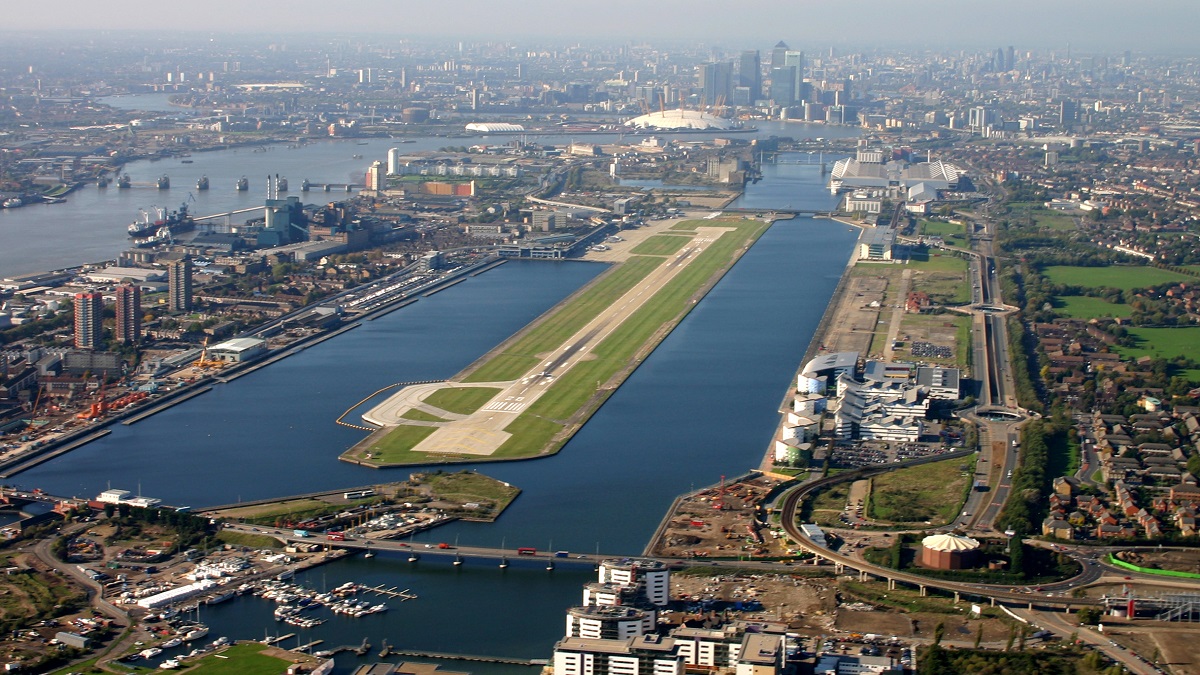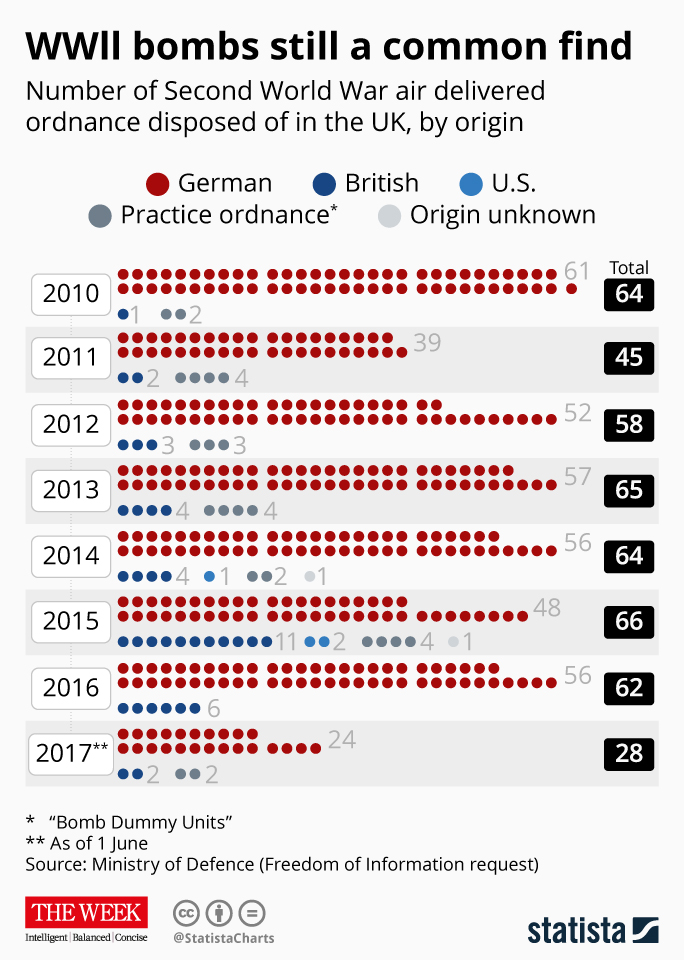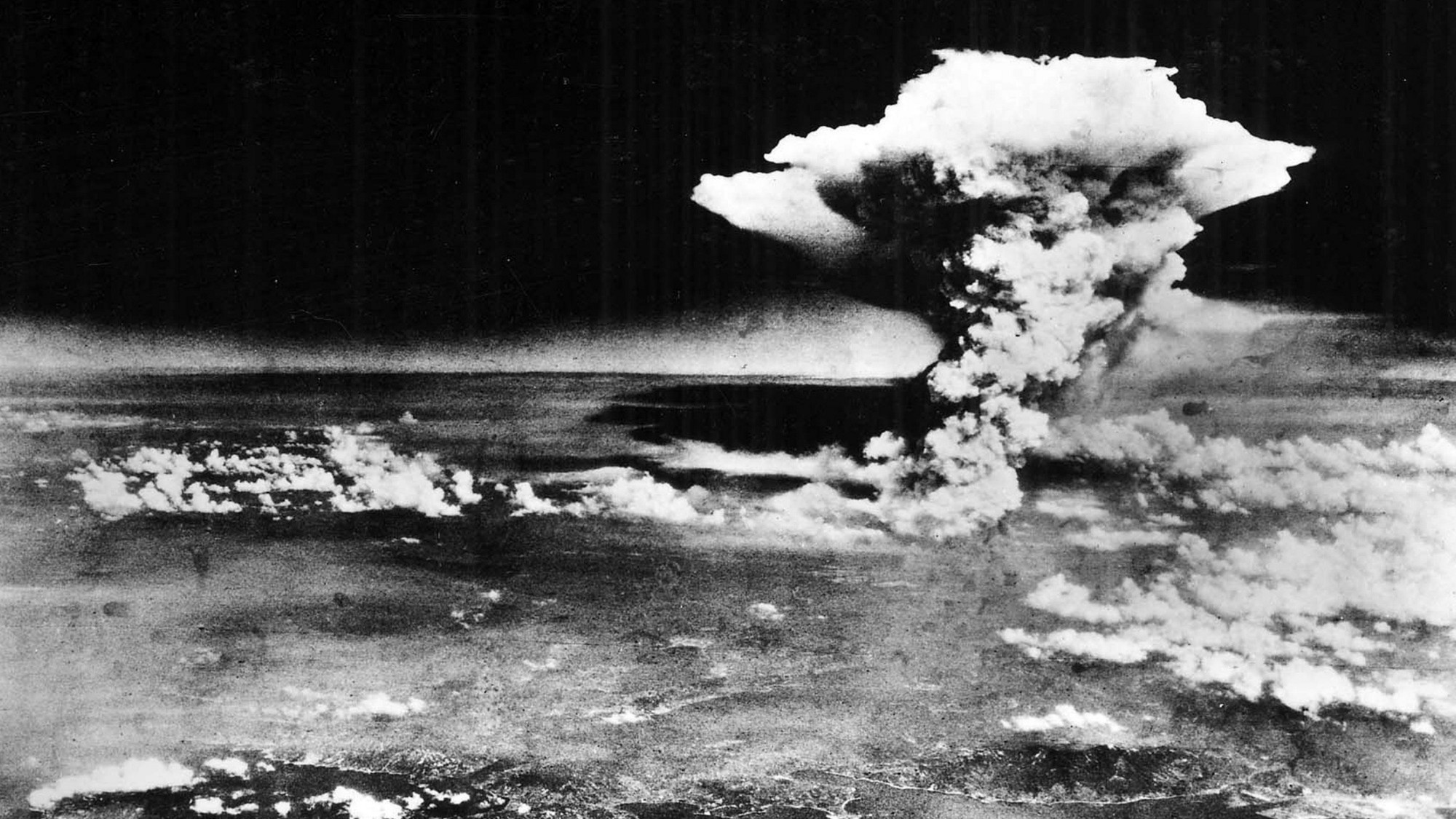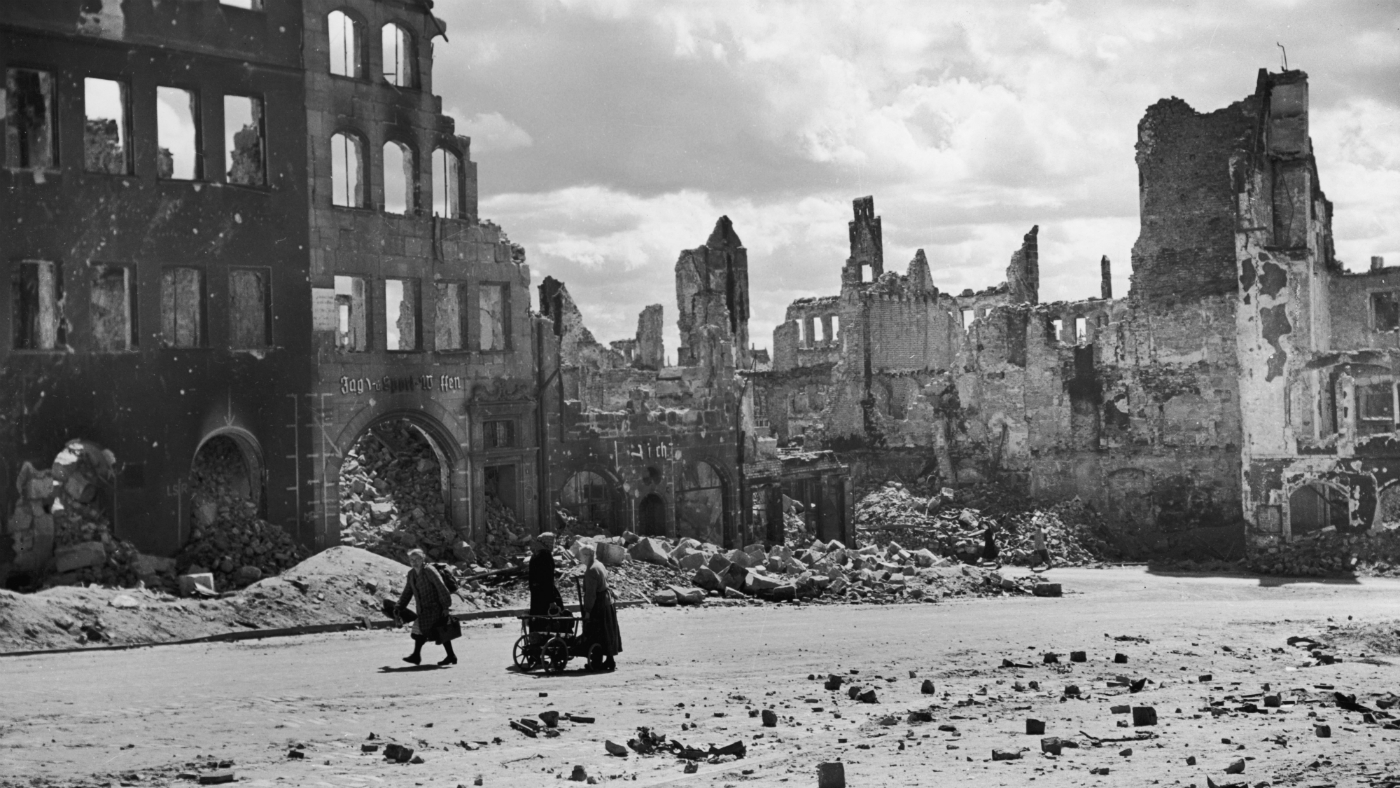London City Airport shut over WWII bomb - but how many are still undiscovered?
Dozens of unexploded devices are found every year in the UK

The discovery of an unexploded Second World War bomb in the River Thames has forced the closure of London City Airport, plunging 16,000 passengers into travel chaos.
The bomb, described by local officials as a “German 500kg fused device”, was unearthed by workers at the nearby George V Dock on Sunday morning. Removal operations are expected to continue until Tuesday morning, reports the London Evening Standard.
Metropolitan Police say they are working with the Navy to remove the device, which is lying in a bed of dense silt.
The Week
Escape your echo chamber. Get the facts behind the news, plus analysis from multiple perspectives.

Sign up for The Week's Free Newsletters
From our morning news briefing to a weekly Good News Newsletter, get the best of The Week delivered directly to your inbox.
From our morning news briefing to a weekly Good News Newsletter, get the best of The Week delivered directly to your inbox.
Due to the massive scale of the German bombing campaign in the south of England during the Second World War, dozens of unexploded bombs are found every year.
It is impossible to know how many are still out there, Matt Brosnan, an Imperial War Museum historian, told the BBC. “Just to put it in context, the Luftwaffe dropped 24,000 tonnes of high explosive on London in 85 major raids during the War,” Brosnan said.

The Ministry of Defence said in a June 2017 Freedom of Information request that bomb disposal teams dealt with an estimated 61 unexploded Second World War bombs per year between 2010 and 2016.
The Construction Industry Research and Information Association estimated in 2009 that in the preceding three years, about 15,000 devices, including grenades, were been removed from construction sites: 5% were live, equivalent to roughly 250 devices a year.
A free daily email with the biggest news stories of the day – and the best features from TheWeek.com
“It would make sense if discoveries are becoming more frequent; in many cases, original sites are being redeveloped for a second time after blocks thrown up in the postwar building boom reach the end of their useful life,” says The Guardian.
Infographic by www.statista.com/chartoftheday for TheWeek.co.uk
-
 Heavenly spectacle in the wilds of Canada
Heavenly spectacle in the wilds of CanadaThe Week Recommends ‘Mind-bending’ outpost for spotting animals – and the northern lights
-
 Facial recognition: a revolution in policing
Facial recognition: a revolution in policingTalking Point All 43 police forces in England and Wales are set to be granted access, with those against calling for increasing safeguards on the technology
-
 Codeword: December 14, 2025
Codeword: December 14, 2025The daily codeword puzzle from The Week
-
 How China rewrote the history of its WWII victory
How China rewrote the history of its WWII victoryIn Depth Though the nationalist government led China to victory in 1945, this is largely overlooked in modern Chinese commemorations
-
 America's controversial path to the atomic bomb
America's controversial path to the atomic bombIn Depth The bombing of Hiroshima followed years of escalation by the U.S., but was it necessary?
-
 Argentina lifts veil on its past as a refuge for Nazis
Argentina lifts veil on its past as a refuge for NazisUnder the Radar President Javier Milei publishes documents detailing country's role as post-WW2 'haven' for Nazis, including Josef Mengele and Adolf Eichmann
-
 D-Day: how allies prepared military build-up of astonishing dimensions
D-Day: how allies prepared military build-up of astonishing dimensionsThe Explainer Eighty years ago, the Allies carried out the D-Day landings – a crucial turning point in the Second World War
-
 The battle of Bamber Bridge
The battle of Bamber BridgeIn Depth The new Railway Children film draws on a forgotten wartime episode: a skirmish between black and white US soldiers in Lancashire
-
 Vladimir Putin’s narrative of Russian victimhood examined
Vladimir Putin’s narrative of Russian victimhood examinedfeature Russian president has repeatedly pointed to his country’s history to justify Ukraine invasion
-
 Can you solve GCHQ’s LGBT-themed Alan Turing brain-teaser?
Can you solve GCHQ’s LGBT-themed Alan Turing brain-teaser?Puzzles and Quizzes Spooks release puzzle as £50 note dedicated to the code breaker enters circulation
-
 Seven tragic Second World War poems
Seven tragic Second World War poemsIn Depth Less well-known than those of the First World War, the poems of WWII are just as gut-wrenching